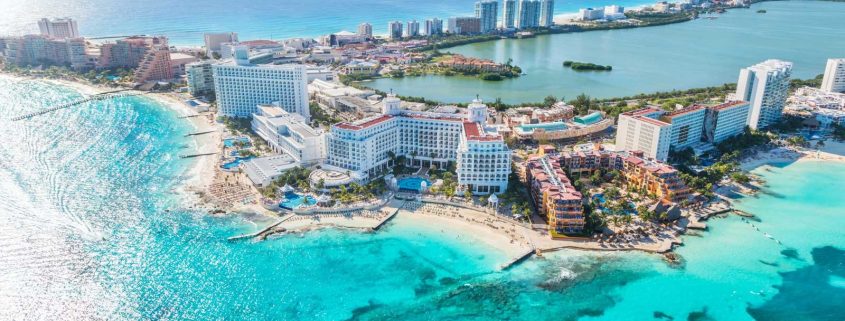After New Travel Warning, Questions About Safety in Mexico
On Aug. 22, the U.S. Department of State issued an updated travel warning on Mexico, advising caution in several popular beach destinations, including Cancún, the Riviera Maya and Los Cabos, for the first time.
The warning notes that murder, kidnapping, carjacking and robbery have been on the rise as rival gangs battle over territory. Recent shootings in Los Cabos, Cancún and Playa del Carmen indicate those conflicts have surfaced in popular beach destinations, although the statement notes that tourists have not been targets.
“Resort areas and tourist destinations in Mexico generally do not see the level of drug-related violence and crime that are reported in the border region or in areas along major trafficking routes,” the warning stated.
Tourism groups in Mexico are quick to point out the rarity of violent events relative to the 28 million American tourists who travel to the country each year.
“If you see this in the context of how many people come, the chance of any situation happening is really truly very small,” said Rodrigo Esponda, the managing director of the Los Cabos Tourism Board. The board reported that 2 million tourists visited Los Cabos, at the southern tip of the Baja Peninsula, last year, and that arrivals are up 20 percent to date this year.
The warning has the potential to crimp a major industry in Mexico, the eighth most-visited country in the world according to the World Tourism Organization. Tourism contributes $19.6 billion to Mexico’s economy, or about 7 percent of its gross domestic product, drawing travelers to its beaches, pre-Columbian archaeological sites and colonial towns.
With both Caribbean and Pacific ports, Mexico is also a popular destination for cruises. The Cruise Lines International Association, which represents the major cruise companies in the industry, issued a statement, noting that ships “have the flexibility to alter their itineraries, as needed, to avoid areas of higher risk.”
To date, no cruise lines have changed routes in Mexico based on security concerns, according to CruiseCritic.com, which tracks the industry and has created a page with cruise port updates in Mexico.
Government forces and the private sector have stationed more police and military in tourist zones. But some business leaders worry that anti-Mexico sentiment, fueled by President Trump’s border wall promise and immigration threats, combined with the travel warning and the recent discovery that tainted alcohol was served at some resorts on Mexico’s Caribbean coast, will weaken demand for travel in the country.
“It could be a perfect storm,” said Alex Zozaya, the chief executive of Apple Leisure Group, which owns AMResorts, Apple Vacations, Cheap Caribbean and other companies. “Our plan is to be objective and give as much information as we can to travelers and invest additional resources to eradicate the problem.”
Security experts suggest taking some precautions, including avoiding traveling at night.
“Don’t hail cabs off the street,” advised Christopher Hagon, the managing partner of GlobalSecure, a Florida-based travel security firm. “They have to be engaged by a hotel and be regulated.”
Several areas that are popular with American travelers, including San Miguel de Allende, Merida and Mexico City, were not included in the warning, which covers 23 of Mexico’s 31 states. Parts of Mexico City, however, are recovering from a destructive 7.1-magnitude earthquake that struck earlier this month.
Here is the latest on security about the top tourist destinations in Mexico mentioned in the State Department warning:
Cancún and Riviera Maya
The state of Quintana Roo, the northeastern section of the Yucatán Peninsula, is home to the popular beach destinations Cancún and Riviera Maya, which have recently experienced shootings linked to gang wars.
“While most of these homicides appeared to be targeted criminal organization assassinations, turf battles between criminal groups have resulted in violent crime in areas frequented by U.S. citizens. Shooting incidents, in which innocent bystanders have been injured or killed, have occurred,” the warning states.
In June, a gunman opened fire in a crowded area of downtown Cancún, killing one. In January, an attack on a state prosecutor’s office killed four. Neither incident took place in the beach destination’s resort-lined hotel zone.
In Playa del Carmen, the largest town on the Riviera Maya, which runs 86 miles along the Caribbean south of Cancún to Tulum, a shooting at a popular nightclub in January killed five. In July, another shootout in town injured three.
The destinations have responded by adding police and military patrols.
“We have had special operations since July and August,” said Dario Flota Ocampo, the general director of the Cozumel and Riviera Maya Tourism Board. “The presence of federal and local forces is continuing. They focus on tourist zones and their presence is permanent.”
According to the tourism board, which has published a safety-related FAQ on its website, 11 million foreign tourists visit the region annually.
Source: The New York Times






